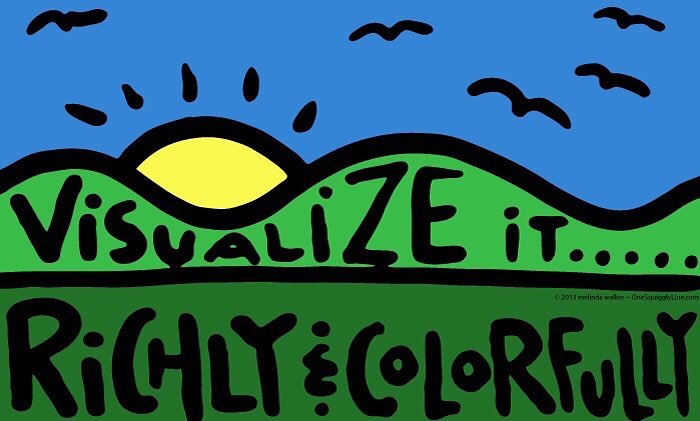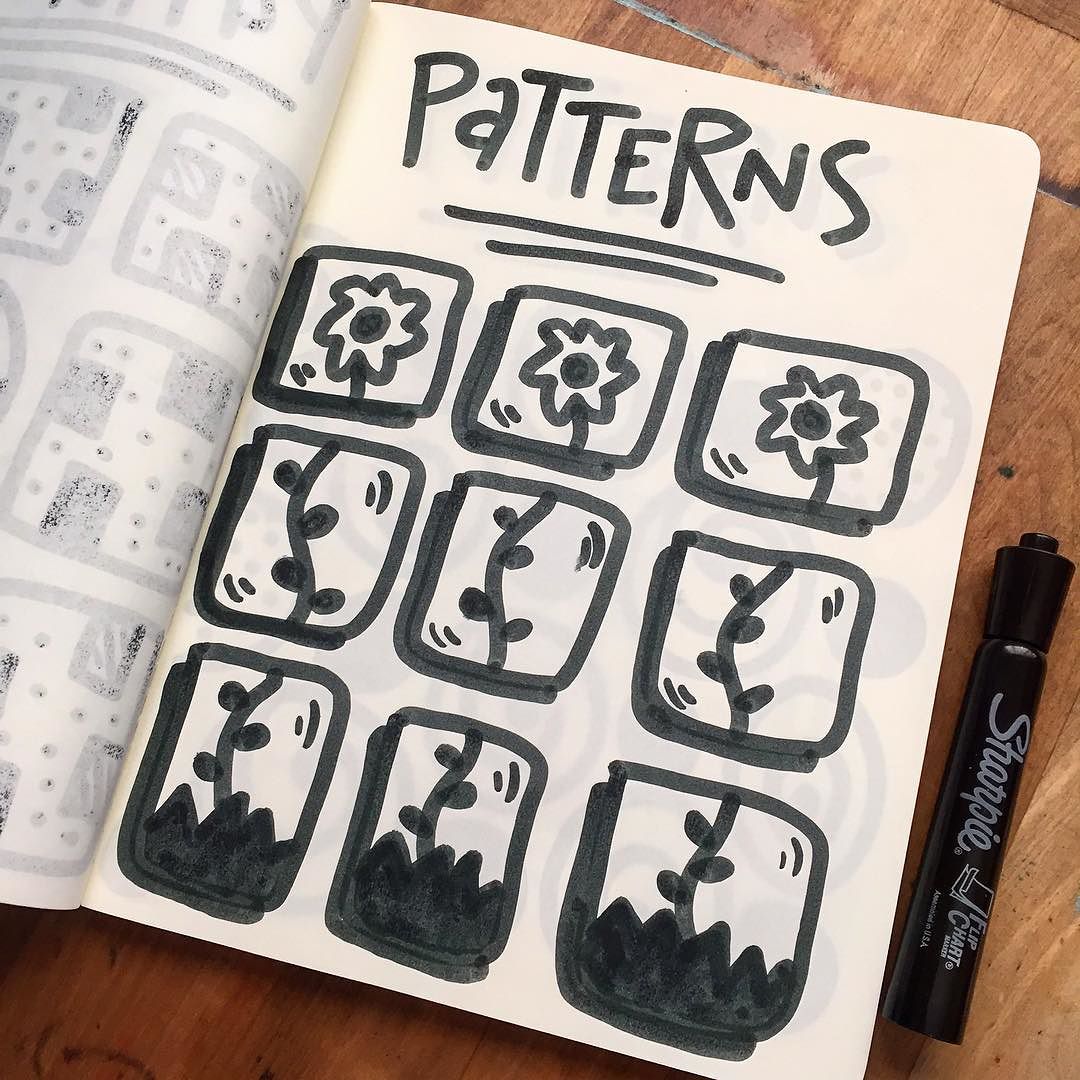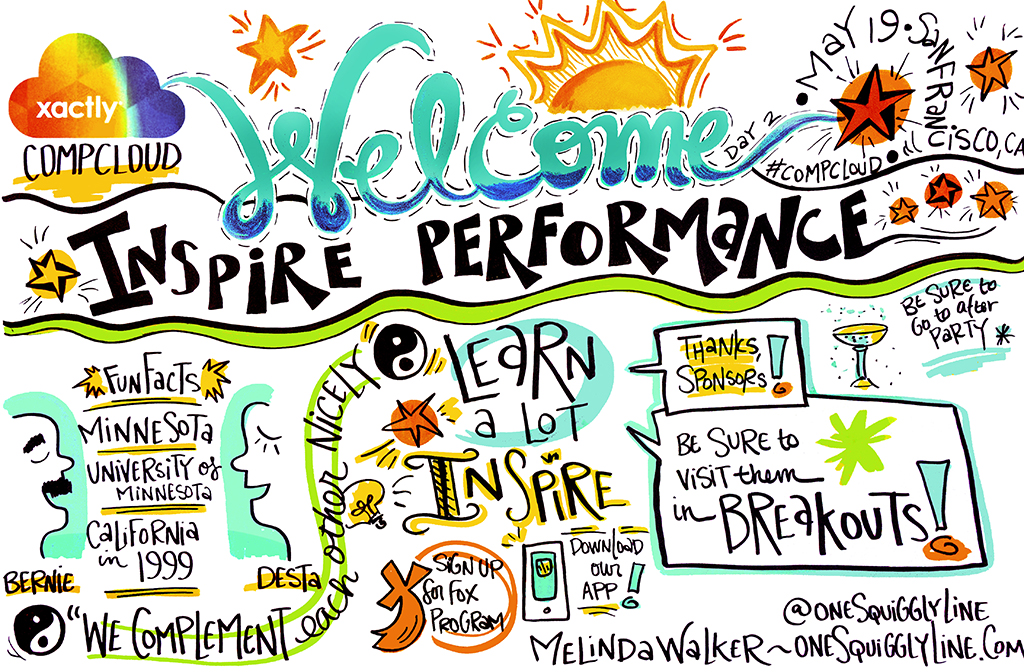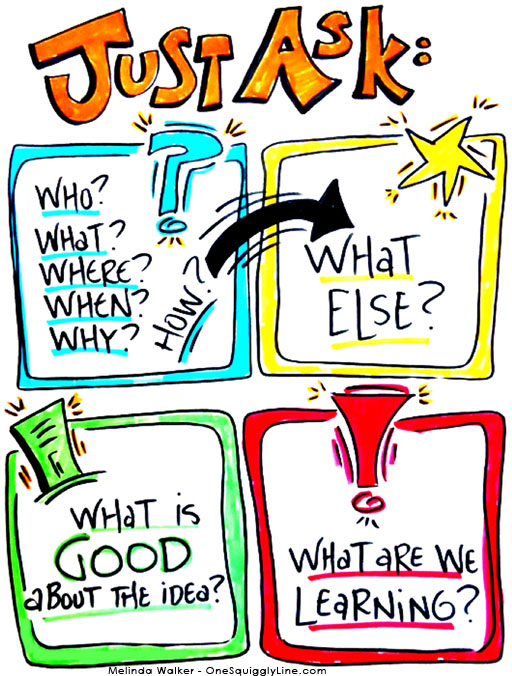Visualizing things richly and colorfully leads to more creative thinking. You probably visualize things more than you realize, without really thinking about it. So you already have some visual thinking skills. But how do you become better at visualizing things on purpose?
Try this:
Go to a hardware store or someplace that sells paint. First, pick a paint sample color card that matches your shirt. That's a warm-up, starting with something very concrete and right in front of you — your shirt.
Then, look for a paint sample color card that matches something at home. It could be a different shirt, a piece of furniture, your walls. Whatever you choose, you will need to picture it very clearly in your mind so you can "see" the color.
Paint sample cards are usually free, so you can take home the ones you think are the closest and see how well you did. The more you practice, the better you get!
Check out One Squiggly Line's About Visual Thinking page to learn more.
Visual Thinking & Creativity: Timelines
Pictures are obviously a big part of visual thinking. So are words. But if you just throw a bunch of words and pictures on a page, you just end up with a mess. A visual mess that makes your thinking messy, too.
That's where organization comes in. It's the third essential component of successful visuals. It doesn't have to be fancy. In fact, it's often best to keep things really simple.
A timeline is a simple and effective way to visually organize information.The image above shows a simple timeline of the International Center for Studies in Creativity, where I got my master's degree. Of course there's a whole lot more to their story than shown in this timeline, but it includes the things that influenced or impacted me in some way. You get the idea, at a glance.
Check out One Squiggly Line's About Visual Thinking page to learn more.
Visual Thinking & Creativity: Think inside the box, too!
There's a myth out there that highly creative people just sit around and wait for inspiration to strike. Like a great big lightening bolt from the sky. Or a soft whisper from a mystical muse.
Truth is, creativity is not quite so passive. It is an active process. And there's a science to it, not just an art. There are even formulas, methods, and procedures for generating ideas and, equally importantly, evaluating them.
While there's often a push to "think outside the box" when generating ideas, thinking inside the box can be just as important. And productive. "The box" gives you a starting place, and sometimes getting started can be the hardest part.
So when looking for creative ideas, it's really ok to start with what you know, right where you are, with whatever you have right in front of you. Because once you start, you'll most likely keep going until that great idea hits you.
Graphic Recording: Welcome!
Friendly visuals can set the tone for the day! This graphic recording was created during the welcoming remarks at the CompCloud event last month here in San Francisco. This represents about a half an hour of content on one 40"x60" board. As you can see, there's some white space and the writing is fairly large.
The next blog post will show another visual from the same event created during a much longer session. As you'll see, the length of the session and amount of content covered impacts the overall look of the resulting graphic recording image.
Visual Thinking: Simple as 1-2-3!
One of the most powerful things about visual thinking is that it makes things simple. When things are simple, they're much easier to remember. And the more often you see something, the more likely you will be to remember it, too.
That's why simple posters are so powerful when working in person. And why simple online visuals are so powerful before and after events, or when you can't be face-to-face.
A super simple way to keep your visuals super simple is as easy as 1-2-3. Choose 1 central image. Use no more than 2 colors. And limit yourself to only 3 words. That's it!
That formula doesn't always work for everything, but it's a great place to start. Even if you have to sneak in an extra word or two, your visual will still be pretty simple.
Visual Thinking & Creativity: Keep it Posted!
When people look at things, they generally think about whatever they're looking at. So if you want to be sure people focus on certain things during your meeting or presentation, visuals can really help.
Posters are a great way to keep that info front and center in everyone's mind. Your posters don't need to be fancy. But they do need to be clear. Very clear. So clear people can get the info in a glance.
The poster above was created for a workshop I taught about thinking styles. It was used during a hands-on group activity to remind each group to try out all four thinking styles. The thinking styles are color coded, so it's easy to focus only on one square at a time. Yet, it gives a clear picture of the whole process. That way, people can move about the process at their own pace and see how they're connected.
Visual Thinking & Graphic Recording: One Main Image
Graphic recording involves taking notes with a lot of pictures. Sometimes, especially with shorter presentations, there's simply no time for a lot of pictures. A lot of pictures may not be needed, either. One large central image can be mighty powerful. And it may be all you need.
There's more than one picture in the graphic recording above. There are some musical notes, a couple of light bulbs, and some simple people at the bottom. Then there's a big face in the center, towards the top. Notice how that face really grabs your eye?
If you're pressed for time, pick one thing to draw. Draw it big and bold. That alone will make your notes or poster much more visual. That one drawing will catch people's eye and bring them into the content more than just words alone.
Visual Thinking: Graphic Recording
There's more than one school of thought when it comes to graphic recording. Some say to use as many pictures as you can. Others say to capture as many words as you can. I tend to fall somewhere in the middle, I think. Well, really, I don't think about it too much. I just do what makes the most sense. Whatever captures the idea best. And visually makes the most sense.
This is a graphic recording I did for practice quite a while ago. It's pretty heavy on the words. Not so many pictures. How the words are arranged on the page and the different colors and sizes make it much more visually interesting than regular writing.
As you can see, amazing drawing skills aren't needed to create visuals with impact!
Graphic Recording: Great Drawing is not the Secret!
Graphic Recording is all about communication. There's definitely an art to it. But it's so not about art! Knowing a few things from the art world can certainly help, though.
Look at the graphic recording above. There's barely any drawing in it - some generic buildings, a few arrows, and a star. That's it! This image is mainly text. And some of that text is even a bit sloppy.
Yet, the image has impact. The impact comes from a few bold words and the bright orange color. Even with a lot of text, there's a sense of movement and balance. Thanks to how things are arranged on the page (the composition).
Bad composition makes people uncomfortable. Good composition draws them in. That's why great drawing is not the secret to creating great visuals. Great composition is really where it's at.
This graphic recording was created while listening to a pre-recorded TED talk, using one black and one orange marker.









